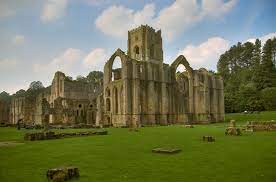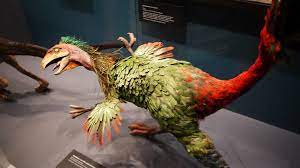According to new research, it has been revealed that one of the most peaceful places in England, the ruins of the Fountain Abbey in Yorkshire was once a bustling center of industrial activity during its apex in the Medieval era. Archaeologists have found that the mysterious ‘bowling alley’ which is located underground east of the ruined abbey is actually the buried remains of a tannery from the Middle Ages.

It is believed that monks and lay brothers processed animal hides into leather at this structure which was supposedly a major commercial hub that could have recruited several hundred people. According to the archaeologist Chris Gaffney from the University of Bradford in England, the discovery has changed the way archeologists view the location. According to Gaffney, although the modern view of the site is that it has appealing abbey ruins, it was in fact an area that was centered on industry, noisy, and very smelly during the Middle Ages.
The team of archaeologists has been exploring the ruins of the Fountains Abbey since the year 2014. They have increasingly been using the ruins to educate archaeological students in non-invasive techniques of mapping like magnetic surveys and radar which can penetrate the ground. The bowling alley-like structure was first discovered some years ago during a geophysical survey, which ascertained very small changes in the magnetic field of the Earth. This in turn revealed the locations where the ground had been disturbed in the past according to the team.
Recent research using the ground-penetrating radar has finally confirmed that the tannery once covered the entire valley floor around the abbey, as per a statement by the University of Bradford. The Fountains Abbey complex included two large stone buildings with one of them being 30 m (100 feet) in length and taller than the height of a single story. It has lined pits, tanks, and other structures too. The buildings were situated along the river Skell which still flows through the valley. The archaeologists feel that the tannery would have obtained the water it needed from the river.
A rich monastic past
The Fountains Abbey was started in 1132 AD by 13 Benedictine monks who had been cast out from an abbey in the city of York after there had been a riot there. The expelled monks later joined the Cistercian order of monks and the establishment became one of the wealthiest monasteries of England. According to records in the abbey, 60 monks were living in it by 1170 AD.
There were also 200 lay brothers in the monastery, who were mostly skilled craftsmen like stonemasons, smiths, and tanners, who were important to the economy of the abbey but were not educated enough to become monks themselves. Fountains Abbey functioned for more than 4 centuries during which it became a large landowner, with many farms for sheep and cattle which were spread throughout the region. according to the team from the University of Bradford.
However, in 1559, with England becoming a Protestant country, the English crown confiscated the abbey and all the lands it held during the termination of the monasteries by King Henry VIII. This was a successful effort to break the financial power of the Catholic Church in England by the monarchy. The lands were sold to the friends of the King. The monks were sent away and the abbey building, which was an architectural wonder, was deprived of its stone, timber, and lead which were sold as building materials. The site is today owned by the National Trust which is an English heritage charity. King Henry VIII’s agents were also not interested in keeping the tannery operational and it has been shown by research that it was subsequently burned and destroyed.
The existence of the tannery is supported by the records which date from the time according to the team of archaeologists from the University of Bradford. The team said that it was aware that the processing of hides was taking place at the site and that the wealth of the very wealthy abbey came primarily from animals and the tanning of their skins. Presumably, the tannery would have used animal hides from the several farms of the abbey, and removed the hairs, degreased the hides, and cured the skin in the hide with an acidic compound known as tannin found in tree bark which gives the entire procedure its name of ‘tanning’.
Occasionally the hides were partially decomposed during the process and some of the treatments used on them included urine and dung, which caused the bad smell that tanneries are well known for. Subsequently, the leather from the tannery would have been used for clothing, furnishings, beds, bookbinding, and the vellum or parchment which the scribes in the monasteries used to copy religious texts upon according to the archaeologists. Every part of the dead animal was used in some way or the other. However, though the archaeologists have ascertained the reason behind the mysterious structures, they don’t have any plans to excavate them as the area where the structures are situated underground has a very good-looking approach to the abbey and they feel that the National Trust will be more comfortable knowing the existence of the tannery without having to dig for it











